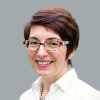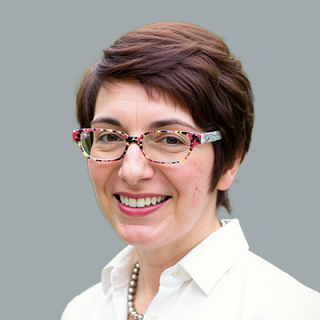Blog
SPAC Market 2025: Thoughts from the Street with Ed Kovary
Today we’re digging into the current state of the SPAC market, covering issuance momentum, de-SPAC financing, governance and disclosure, jurisdictional questions, and sector themes. I’m joined by Ed Kovary, managing director and head of SPAC Capital Markets at BTIG.
Watch our full conversation below or read this blog post for a summary of the key points.
Key Takeaways:
- Quality and valuation discipline are winning again. Better disclosure, experienced sponsors, and sober pricing and valuations are producing higher trust retention and renewed PIPE appetite.
- Cost to market has normalized and options have broadened. D&O rates are much lower than in previous years and at-risk capital can be self-funded or syndicated, reducing required at-risk capital raise and allowing sponsors to choose between economics and capital efficiency.
- Backlog and timing certainty favor SPACs. With a multi-year queue of IPO-ready businesses, SPACs remain a credible path for teams that need certainty and cannot wait for the traditional IPO queue to clear out.
How Will the SEC Shutdown Affect SPAC IPOs and De-SPACs?
Yelena Dunaevsky: We’re recording on the first day of a government shutdown. How does that affect the near-term pipeline for SPACs and traditional IPOs?
Ed Kovary: In the short run, it’s all about timing. Issuers who were declared effective before the shutdown can still launch and price. Those who were a few weeks away must wait until the Securities and Exchange Commission (SEC) is back to clear comments and go effective. If a shutdown were unusually prolonged, SPACs retain a unique feature—under certain circumstances, they can go effective automatically—but practically, most teams will use the downtime to finalize filings, align their advisers, and be truly ready the moment the SEC reopens. It can slow issuance if it lasts, and calendar congestion becomes a risk as we approach year-end.
Navigating the New Phase of the SPAC Market
Yelena Dunaevsky: Stepping back, we’re in a new phase of the market right now, which is quite different from the euphoric cycle from a few years ago. There are more repeat sponsors and increased emphasis on transparency, governance, and additional disclosure. What are you telling your clients about operating in this new wave of the market?
Ed Kovary: The SEC’s push for clearer disclosure is a net positive—it strengthens the SPAC vehicle as a tool. Experience also matters. We’re seeing repeat sponsors because those who’ve run a vehicle understand the friction points and how to manage dilution within a thoughtful structure. Nothing replaces having run a vehicle and the process before, including the hurdles you encounter in looking to transact and take an operating business public through the vehicle.
It is a diluted vehicle, but it's there to serve a purpose, and the dilution and some of the negative dynamics of the vehicle can be navigated with the right professionals, the right mindsets, creativity, and structuring.
Encouragingly, since mid-year, we’re also seeing first-time issuers return, largely because there's been a handful of successful de-SPAC businesses that have announced, common has traded above the cash and trust level, and we've seen several transactions retain full proceeds from their SPACs. We've seen high retention rates—75%, 60%. Now, there was one that had very limited, almost no retention, but they were able to secure the financing needed for that business through a PIPE.
Capital is available. Institutional investors are supporting the businesses that are coming out. I think one of the things institutional investors recognize is that because there is such a massive queue of companies waiting to come out the traditional IPO route, there are going to be some very good businesses that need certainty on timing to come out, and they will opt to do so via a SPAC.
Yelena Dunaevsky: Costs were punishing in 2021–2022. At-risk capital buckets were large, insurance costs were through the roof, but now we are seeing D&O pricing normalize and sponsors becoming more creative about structuring their at-risk capital. What is the landscape you are seeing now?
Ed Kovary: It’s never been cheaper—on a relative basis—to bring a SPAC to market. There are two workable paths for at-risk capital. Some sponsors self-fund and keep the full promote if they close; others have the bank syndicate the risk capital across family offices and institutional pools that like the return profile. Think of it as a three-year venture capital portfolio: you strive for a couple of home runs, a handful of singles, and accept a few zeros—the blended target is a venture-like return. Sponsors who self-fund want to preserve economics; sponsors who syndicate value capital efficiency and speed. Both paths are active again, and the cost curve is far more rational than it was.
Is There Capital for De-SPACs?
Yelena Dunaevsky: If we look 12–18 months out, today’s SPAC IPOs will be tomorrow’s de-SPACs. Is there enough capital on the other side?
Ed Kovary: We're starting to see institutional investors put equity capital to work in de-SPACs, typically in the form of buying existing SPAC shares that are freely tradable, publicly traded, and hence taking the common share above the cash and trust. As we know, when the common is trading above cash and trust, that's typically a bar indicating that you've got the institutional support to retain your trust. If it's trading at trust or below, then you're subject to what could be very significant redemptions.
But we're also seeing PIPEs starting to be done. The bar for raising PIPE capital is still very high. It is always up to the quality of the business, the management, and the valuation. But investors are going over the wall, taking meetings, evaluating businesses, and making investment decisions, and that's a positive. That's only going to further open up as we see more companies come to market through the traditional route. As there's performance in the secondary market for new issues, that is going to open up more pockets of capital. So the outlook over the next year, year and a half, is quite positive for the product.
The Shift Away from Delaware
Yelena Dunaevsky: Let’s talk about the Delaware versus Cayman question, and in general, the potential shift away from Delaware to other jurisdictions in the US.
Ed Kovary: There have been a very few smaller issuers who have listed, surprisingly, in the US, which has perplexed a great many institutional investors.
But from an advisory standpoint, at this moment in time, the SPAC sponsor needs to be structured offshore. They create their entity in Delaware, but then the SPAC itself is offshore.
Yelena Dunaevsky: On a related note, the SEC recently came out with some thoughts around arbitration being a possible avenue for dispute resolutions for publicly listed companies.
My colleagues have offered some thoughts on the Delaware vs. Texas and Nevada debate and put together a webinar on arbitration and litigation and potential outcomes and settlements.
What’s the Future of Crypto Treasury?
Yelena Dunaevsky: Let’s talk crypto-treasury SPACs. We’ve seen them get very hot and there is still some froth in the market, but is this idea sustainable?
Ed Kovary: You’ll likely see a few more of these, but SPACs aren’t the most efficient vehicle for a pure treasury trade: time-to-close and promote dilution can be headwinds. We expect the crypto theme to evolve toward infrastructure businesses—operators that survived the winter, have real revenue, and want public currency. Those can be credible de-SPAC candidates if the fundamentals support it.
Key Sectors to Look Out for
Yelena Dunaevsky: Looking at potential de-SPACs down the road, a few months from now, which industry sectors do you think will dominate?
Ed Kovary: Thus far, it’s been thematic: AI and compute, including quantum—some high-profile compute names have traded well. Data centers and power—there’s massive demand for compute and the energy to support it; with policy tailwinds shifting, conventional energy is again investable in certain strategies. Crypto infrastructure—operators with revenue who’ve earned their stripes through the downturn. Industrial tech and other cash-generative stories—not flashy, but institutionally underwritable on EBITDA and cash flow. We expect broadening from here. Traditional, profitable businesses aren’t precluded by the SPAC form; they are simply more price-sensitive, which invites rational valuation.
Yelena Dunaevsky: Before we wrap, what’s your broader message to sponsors and operating companies that are watching this market?
Ed Kovary: I think that a SPAC is a really exciting product because there are so many different ways to invest in and around the product—whether it's putting up risk capital and having venture-like returns, or on a risk-adjusted basis investing in SPAC IPOs and making a nice return above and beyond the risk-free rates. Reserving that front-row seat to not-yet-public companies is what the vehicle effectively is doing. It's very exciting times, and one of the things that we articulate to our sponsors and prospective sponsors is that this cycle is unique versus some of the other cycles in that the traditional IPO window was closed for an extended period of time—nearly three years—and as a result, the backlog of businesses to come out is absolutely tremendous.
The funnel is not wide enough for those businesses to become public in the next year and change, and so you’re going to have some great businesses that choose to pivot to the SPAC vehicle. So these are very exciting times to be in and around and involved in the product.
Disclaimer: The information contained herein is offered as general industry guidance regarding current market risks, available coverages, and provisions of current federal and state laws and regulations. It is intended for informational and discussion purposes only. This publication is not intended to offer financial, tax, legal or client-specific insurance or risk management advice. No attorney-client or broker-client relationship is or may be created by your receipt or use of this material or the information contained herein. We are not obligated to provide updates on the information contained herein, and we shall have no liability to you arising out of this publication. Woodruff Sawyer, a Gallagher Company, CA Lic. #0329598.
Author
Table of Contents









